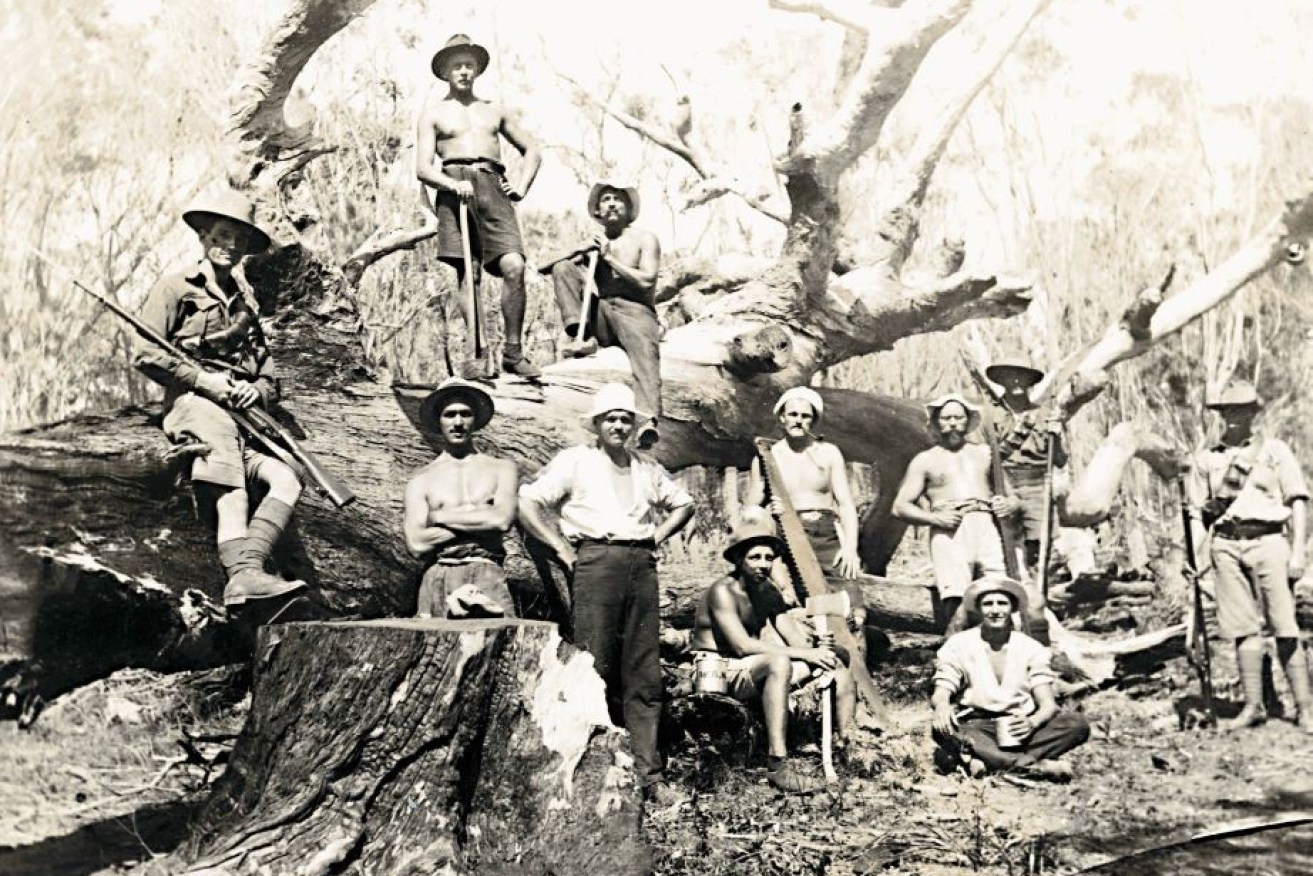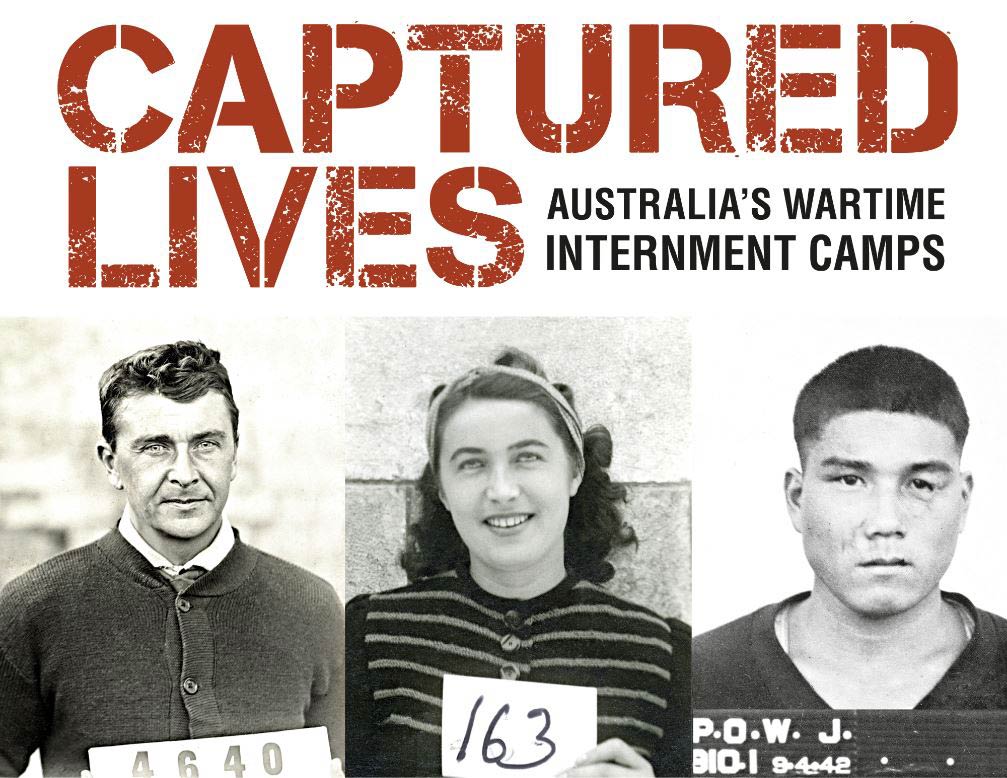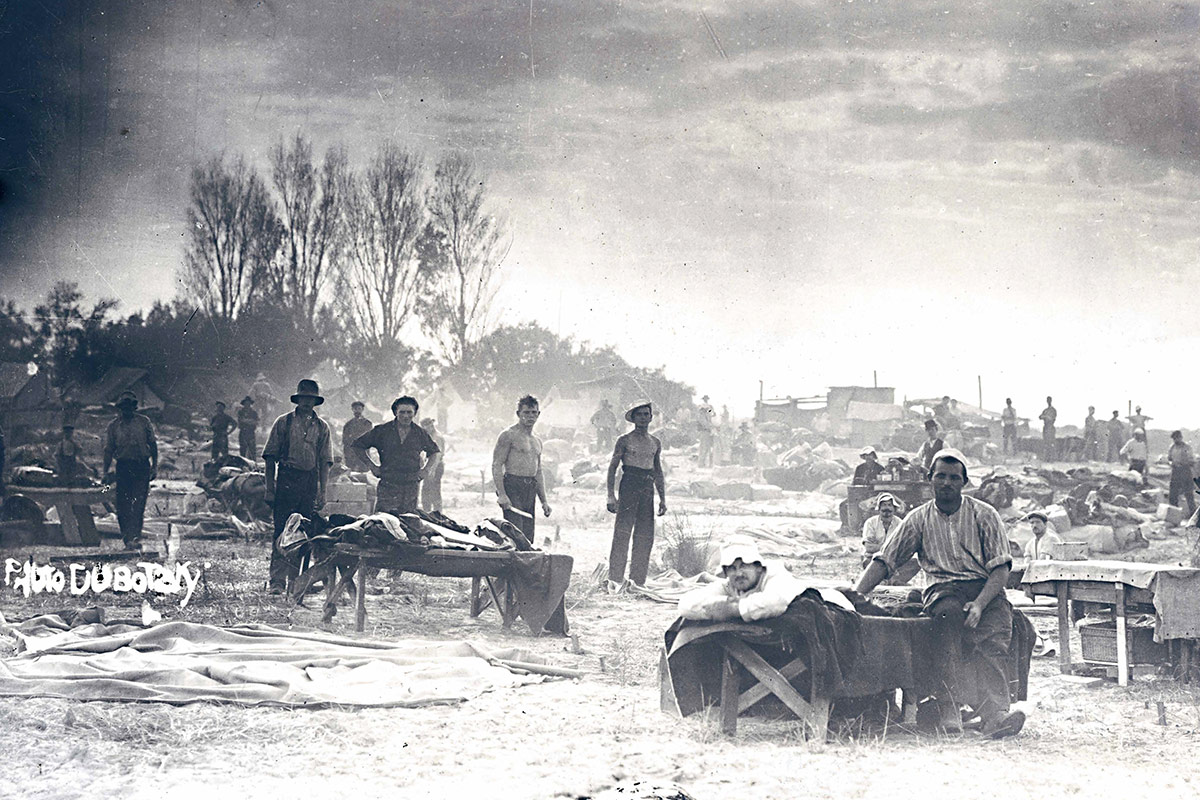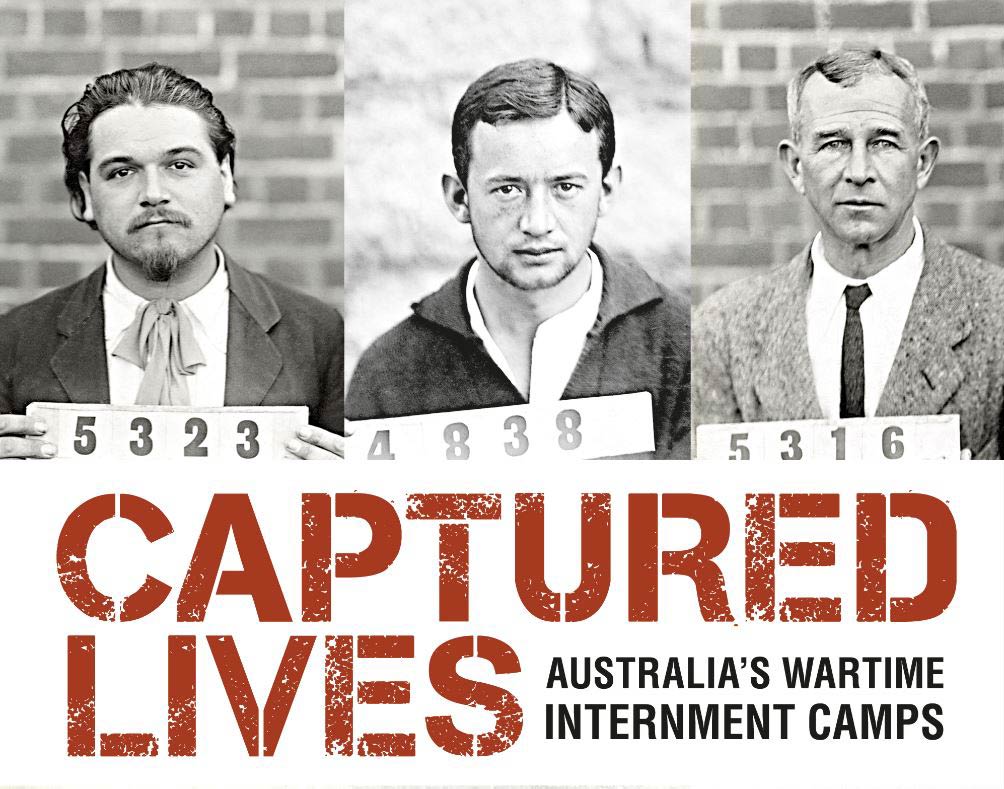
Captured in time – our war internees
Foreigners who were interned when Australia went to war led remarkable lives, with many of their stories relatively untold.

A wood-cutting party from the Trial Bay camp in NSW in the First World War. National Library of Australia photo by Karl Lehmann (Nla.cat-vn4969432).
Flinders University historian Professor Peter Monteath’s new book, Captured Lives: Australia’s Wartime Internment Camps (National Library of Australia Publishing, $39.99) follows the recent publication of Savage Worlds: German Encounters Abroad 1798-1914, co-edited with Flinders historian Associate Professor Matthew Fitzpatrick (Manchester University Press).
Following from earlier books entitled Interned: Torrens Island 1914-15 and POW: Australian Prisoners of War in Hitler’s Reich, the new book revisits South Australian internment camp sites at Sandy Creek, Loveday and Torrens Island.
Captured Lives covers more than 30 of the main internment and prisoner of war (POW) camps spread across Australia during the two world wars. Individual stories are told of a colourful selection of civilian internees, POWs and the officials who managed the camps.

Professor Monteath, a prolific author, says the new book “builds on a 2014-15 collaboration with the SA Migration Museum which featured a book and exhibition on the Torrens Islands Internment Camp – or German Concentration Camp as it was known at the time”.
“This time the National Library of Australia sought a collaboration to do a book covering internment and POW camps in all parts of Australia and in both wars.
“It’s a topic which has great resonance in South Australia with its German roots, but with a significant Italian population also.
“In the Second World War there was a large camp at Loveday, and many South Australians today have forebears who spent time behind barbed wire there.
“In the Second World War, in particular, the diversity of the populations in the camp – civilian internees and POWs – is most striking.”
The insights in Captured Lives: Australia’s Wartime Internment Camps give a captivating, visual look behind the barbed wire fences that contained people deemed to be a threat to Australian security.
Civilians from ‘enemy’ nations, even if born in Australia, were subjects of suspicion and locked up in internment camps. Many were long-term residents of Australia, had contributed to the local economy and brought new skills and know-how to the nation.

Prisoners airing their bedding at the Torrens Island camp in South Australia. Bavarian internee Paul Dubotski was arrested in Adelaide in 1915 as an “enemy alien”. A skilled photographer by trade, he was permitted to produce photographs and run his own studio inside the camp.
For them, being interned was very difficult and bewildering. Among them were:
- German anthropologist Leonhard Adam who was interned at the Tatura camp in Victoria during the Second World War before later becoming a leading researcher at the University of Melbourne. In the First World War, the talented ethnologist met South Australian Indigenous soldier Roland Carter in a POW camp, which has become the subject of a new play produced for ANZAC Day this year by director/dramaturg Flinders University Professor Julian Meyrick.
- Bavarian Paul Dubotzki was in PNG when the German army mobilised in the First World War. A keen photographer, he recorded some official records at the Torrens Island ‘concentration camp’ near Adelaide and later the camps at Liverpool (Holdsworthy) and Trial Bay in New South Wales where he was also held. After the war, he lived until 1969 in Germany.
- Barossa Valley doctor Johannes Heinrich Becker (1898–1961) attracted attention before the Second World War as a Nazi sympathiser. Arrested and initially held at the Keswick Army Barracks in Adelaide, he was then imprisoned in Gladstone Gaol in regional South Australia for the duration of the war.
- German-born Edmund Resch, a naturalised Australian and resident of more than 50 years and an early pioneer of beer brewing in Australia, who was interned in 1917.
- Kurt Wiese, a POW for five years, who honed his illustrating skills by sketching fauna and cartoons to amuse fellow prisoners, leading to an international career as an illustrator of hundreds of books.
- Reinhard Waldsax, a trained dentist, who found himself in the Hay camp in NSW with many patients but only rudimentary equipment. He carried out hundreds of fillings and extractions with improvised equipment such as a chisel and wooden mallet.





